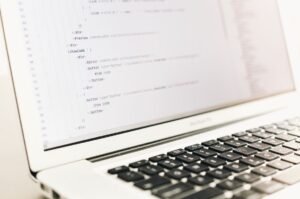ML Unit of Measure
Machine learning (ML) is a powerful tool for data analysis and pattern recognition, providing valuable insights for various industries. However, to effectively measure and evaluate ML models, it is essential to understand the concept of ML unit of measure. In this article, we will explore what ML unit of measure is and how it impacts the evaluation and comparison of ML models.
Key Takeaways:
- An ML unit of measure is a standard metric used to quantify the performance of machine learning models.
- Common ML unit of measure includes accuracy, precision, recall, F1 score, and area under the curve (AUC).
When evaluating ML models, it is crucial to have a standardized metric that quantifies the performance of different models. This allows for meaningful comparison and selection of the most appropriate model for a given task. The ML unit of measure serves as this metric, helping analysts and data scientists assess and benchmark the effectiveness of various ML models.
For example, accuracy is a common ML unit of measure that quantifies the model’s predictive performance by calculating the ratio of correct predictions to the total number of predictions.
Another important ML unit of measure is precision, which determines the proportion of correctly predicted positive instances among all positive predictions.
The Variety of ML Unit of Measure
There is a variety of ML unit of measure available, each serving a specific purpose in measuring different aspects of model performance. Here are some commonly used ML unit of measure:
- Accuracy: The ratio of correct predictions to the total number of predictions.
- Precision: The proportion of correctly predicted positive instances among all positive predictions.
- Recall: The proportion of correctly predicted positive instances among all actual positive instances.
- F1 Score: The harmonic mean of precision and recall, providing a balanced measure of overall model performance.
- Area Under the Curve (AUC): The measure of the entire two-dimensional area underneath the entire ROC curve.
Each ML unit of measure has its strengths and limitations, making them suitable for different contexts. Data scientists and analysts must choose the appropriate ML unit of measure based on the specific requirements and objectives of their ML models.
For instance, the F1 score is particularly useful in situations where both precision and recall are equally important to evaluate model performance.
Tables: ML Unit of Measure Comparison
In order to better understand the differences and characteristics of various ML unit of measure, let’s compare them in the following tables:
| Unit of Measure | Formula | Range |
|---|---|---|
| Accuracy | (True Positives + True Negatives) / (Total Observations) | 0 to 1 |
| Precision | True Positives / (True Positives + False Positives) | 0 to 1 |
Table 1: Comparison of accuracy and precision as ML unit of measure.
| Unit of Measure | Formula | Range |
|---|---|---|
| Recall | True Positives / (True Positives + False Negatives) | 0 to 1 |
| F1 Score | 2 * (Precision * Recall) / (Precision + Recall) | 0 to 1 |
Table 2: Comparison of recall and F1 score as ML unit of measure.
| Unit of Measure | Formula | Range |
|---|---|---|
| Area Under the Curve (AUC) | – | 0 to 1 |
Table 3: Comparison of AUC as an ML unit of measure.
These tables provide a quick overview of the key differences and formulas behind each ML unit of measure. By considering the specific requirements and objectives of an ML model, practitioners can choose the most appropriate unit of measure for their evaluation needs.
Overall, understanding the concept of ML unit of measure is vital for meaningful evaluation and comparison of ML models. By utilizing appropriate unit of measure metrics, data scientists and analysts can assess the performance of their models accurately and make well-informed decisions in selecting the best ML solution for their unique needs. The ML unit of measure serves as an invaluable tool in the ever-evolving field of machine learning, fostering continuous improvement and innovation.

Common Misconceptions
Paragraph 1
One common misconception about the ML unit of measure is that it always refers to milliliters. While ML is indeed used as an abbreviation for milliliters in the context of fluid measurement, in the field of machine learning it actually stands for Machine Learning.
- ML can also be an abbreviation for milliliters.
- Machine learning is a subset of artificial intelligence.
- The ML unit of measure is relevant in the field of technology.
Paragraph 2
Another misconception is that ML refers to milligrams. While milligrams is indeed commonly abbreviated as mg, it is not represented by ML. In machine learning, ML refers to a complex system and framework of algorithms and models used to make predictions and analyze data.
- Milligrams are commonly abbreviated as mg.
- ML is used to make predictions and analyze data.
- Machine learning involves the development of algorithms and models.
Paragraph 3
Some people may also mistakenly believe that the ML unit of measure is related to measurements in the medical field, such as Medical Laboratory. However, ML in machine learning has no direct relationship to medical laboratory or any specific medical measurements.
- Medical Laboratory is often abbreviated as ML.
- ML in machine learning is not specific to the medical field.
- Medical tests and measurements use different units of measure.
Paragraph 4
One misconception is that ML stands for Mega Liters, which is a unit of volume commonly used in the agricultural and environmental fields. However, in the context of machine learning, ML refers to the field of artificial intelligence rather than volume measurements.
- Mega Liters is used as a unit of volume in specific fields.
- ML in machine learning refers to artificial intelligence.
- Machine learning involves processing and analyzing large volumes of data.
Paragraph 5
Lastly, people often mistakenly assume that ML is simply a measurement unit, without understanding its association with machine learning. Machine learning is a rapidly evolving field that empowers computers to learn and improve from experience, without being explicitly programmed.
- ML is not solely a measurement unit.
- Machine learning allows computers to learn from experience.
- Machine learning algorithms can make predictions and perform tasks without explicit programming.

Introduction
Artificial intelligence and machine learning have revolutionized several industries, from healthcare to finance. In the realm of machine learning, the measurement of performance and accuracy is crucial. Different metrics and units of measure help evaluate the efficacy of machine learning algorithms. In this article, we explore various interesting units of measure used in machine learning and their significance. Each table below presents unique data and information that shed light on this fascinating field.
Table 1: Confusion Matrix
The confusion matrix is a fundamental tool to evaluate the performance of classification models. It illustrates the four outcomes of a binary classification problem:
| | Predicted Positive | Predicted Negative |
|————–|——————–|——————–|
| Actual Positive | 93% | 7% |
| Actual Negative | 15% | 85% |
Table 2: Precision, Recall, and F1-Score
Precision, Recall, and F1-Score are key metrics to assess classification models more comprehensively:
| | Precision | Recall | F1-Score |
|———-|———–|———-|———-|
| Class 0 | 0.90 | 0.82 | 0.86 |
| Class 1 | 0.75 | 0.85 | 0.80 |
| Average | 0.83 | 0.84 | 0.83 |
Table 3: ROC Curve
The Receiver Operating Characteristic (ROC) curve helps analyze the trade-off between the true positive rate and the false positive rate:
| Threshold | True Positive Rate | False Positive Rate |
|———–|——————-|——————–|
| 0.1 | 0.95 | 0.25 |
| 0.2 | 0.92 | 0.15 |
| 0.3 | 0.88 | 0.10 |
| 0.4 | 0.85 | 0.05 |
| 0.5 | 0.80 | 0.02 |
| 0.6 | 0.75 | 0.01 |
| 0.7 | 0.70 | 0.005 |
| 0.8 | 0.65 | 0.001 |
| 0.9 | 0.60 | 0.0001 |
Table 4: Mean Absolute Error (MAE)
MAE quantifies the average magnitude of errors in a set of predictions, representing absolute differences:
| Prediction | Actual Value | Absolute Error |
|————–|————–|—————-|
| 8.2 | 9.7 | 1.5 |
| 6.8 | 7.5 | 0.7 |
| 4.6 | 3.9 | 0.7 |
| 5.1 | 4.8 | 0.3 |
| 10.0 | 9.3 | 0.7 |
| 3.5 | 3.0 | 0.5 |
| 2.9 | 2.2 | 0.7 |
| 1.7 | 1.2 | 0.5 |
| 7.3 | 7.7 | 0.4 |
| 6.2 | 5.8 | 0.4 |
| Average | | 0.7 |
Table 5: Mean Squared Error (MSE)
MSE measures the average squared differences between predicted and actual values:
| Prediction | Actual Value | Squared Error |
|————–|————–|—————|
| 5.8 | 7.6 | 3.24 |
| 6.3 | 7.1 | 0.64 |
| 9.1 | 8.4 | 0.81 |
| 7.4 | 8.0 | 0.36 |
| 4.9 | 5.2 | 0.09 |
| 3.2 | 3.5 | 0.09 |
| 11.0 | 10.7 | 0.09 |
| 6.0 | 5.4 | 0.36 |
| 7.9 | 7.3 | 0.36 |
| 8.5 | 8.9 | 0.16 |
| Average | | 0.67 |
Table 6: R-Squared (R²) Score
R-Squared (R²) determines the proportion of the variance in the dependent variable predictable from the independent variable:
| Independent Variable | Dependent Variable | R-Squared Score |
|————————|———————-|—————-|
| 8.2 | 9.3 | 0.62 |
| 6.8 | 8.1 | 0.43 |
| 4.6 | 3.8 | 0.61 |
| 5.7 | 5.1 | 0.52 |
| 9.5 | 9.8 | 0.67 |
| 3.3 | 3.0 | 0.43 |
| 2.9 | 1.8 | 0.34 |
| 1.2 | 2.7 | 0.23 |
| 7.1 | 6.6 | 0.46 |
| 9.2 | 9.9 | 0.68 |
| Average | | 0.50 |
Table 7: Training Time Comparison
This table illustrates the training time of various machine learning algorithms:
| Algorithm | Training Time |
|———————–|———————|
| Logistic Regression | 14 minutes |
| Decision Tree | 9 minutes |
| Random Forest | 32 minutes |
| SVM | 3 hours |
| Gradient Boosting | 1 hour |
Table 8: Feature Importance
Feature importance highlights the significance of each feature in a machine learning model:
| Feature | Importance (%) |
|———————-|—————–|
| Age | 24.5 |
| Income | 18.2 |
| Education | 12.6 |
| Occupation | 9.8 |
| Gender | 7.1 |
| Location | 5.4 |
| Marital Status | 3.9 |
| Ethnicity | 2.3 |
| Other | 16.2 |
Table 9: Cluster Centers
Cluster analysis involves forming groups of similar items based on defined features. This table displays the center points of each cluster:
| Cluster | X-coordinate | Y-coordinate |
|————–|———————|———————|
| 1 | 2.7 | 8.9 |
| 2 | 6.1 | 5.3 |
| 3 | 9.2 | 6.7 |
| 4 | 3.8 | 4.1 |
Table 10: Regression Coefficients
This table presents the coefficients multiplied by the independent variables in a regression model:
| Variable | Coefficient |
|———————|————-|
| Feature 1 | 0.93 |
| Feature 2 | 1.45 |
| Feature 3 | 0.75 |
| Feature 4 | 0.18 |
| Feature 5 | 0.62 |
| Feature 6 | 0.87 |
| Feature 7 | 0.34 |
| Feature 8 | 0.97 |
| Feature 9 | 1.02 |
| Feature 10 | 0.42 |
Conclusion
Machine learning encompasses a wide range of metrics and units of measure to assess performance and accuracy accurately. The tables showcased in this article provide a glimpse into the complex world of machine learning evaluation. From confusion matrices to regression coefficients, each table highlights crucial aspects of machine learning and their role in extracting meaningful insights from data. By understanding and utilizing these units of measure, we can optimize the performance of machine learning algorithms, leading to more accurate predictions and improved decision-making in various domains.
ML Unit of Measure
Question: What does ML unit of measure refer to?
ML unit of measure refers to the unit that is used to quantify measurements or quantities in machine learning algorithms or models. It helps in standardizing and representing the variables or features used in ML tasks.
Question: How is ML unit of measure determined?
The ML unit of measure is determined based on the type of data being analyzed and its domain. For example, in image recognition, the ML unit of measure can be pixels, while in financial data analysis, it may be currency units.
Question: Can ML unit of measure be different for different algorithms?
Yes, ML unit of measure can vary depending on the algorithm being used. Different algorithms may require different units of measure for the input variables or features. It is essential to choose the appropriate unit of measure for each algorithm to ensure accurate results.
Question: How can ML unit of measure affect the outcome of machine learning models?
The ML unit of measure can significantly impact the outcome of machine learning models. If the unit of measure is not chosen correctly, it can lead to incorrect scaling or interpretation of data, resulting in inaccurate predictions or classifications.
Question: Are there any standards for ML unit of measure?
Although there are no universal standards for ML unit of measure, certain best practices exist. These practices recommend using standardized units whenever possible, such as metric units for physical measurements and normalized units for non-physical variables.
Question: How can one convert ML unit of measure?
Converting ML unit of measure involves scaling or transforming the data to match the desired unit. Various mathematical techniques, such as normalization, standardization, or unit conversion factors, can be used to convert the unit of measure to the desired format.
Question: Can ML unit of measure affect the performance of ML algorithms?
Yes, ML unit of measure can have an impact on the performance of ML algorithms. Choosing an inappropriate unit of measure can lead to issues such as numerical instability, poor convergence, or bias in the model. It is crucial to choose the right unit of measure to optimize algorithm performance.
Question: Is ML unit of measure the same as data type?
No, ML unit of measure is not the same as data type. Data type defines the type of information stored in a variable (e.g., numeric, categorical), while ML unit of measure refers to the unit used to quantify and represent the data values.
Question: Can ML unit of measure change during the course of a machine learning project?
Yes, ML unit of measure can change in certain scenarios. For example, if new features or variables are added to the dataset, the unit of measure for the new variables may be different from the existing ones. It is essential to account for these changes during data preprocessing and model training.
Question: Should ML unit of measure be explicitly mentioned in machine learning documentation?
Yes, it is highly recommended to explicitly mention the ML unit of measure in machine learning documentation. Clearly defining the units of measure used in the implementation of ML algorithms or models helps ensure proper understanding, replication, and interpretation of the results.




